The Trees 2 - asliteratureavcol
advertisement
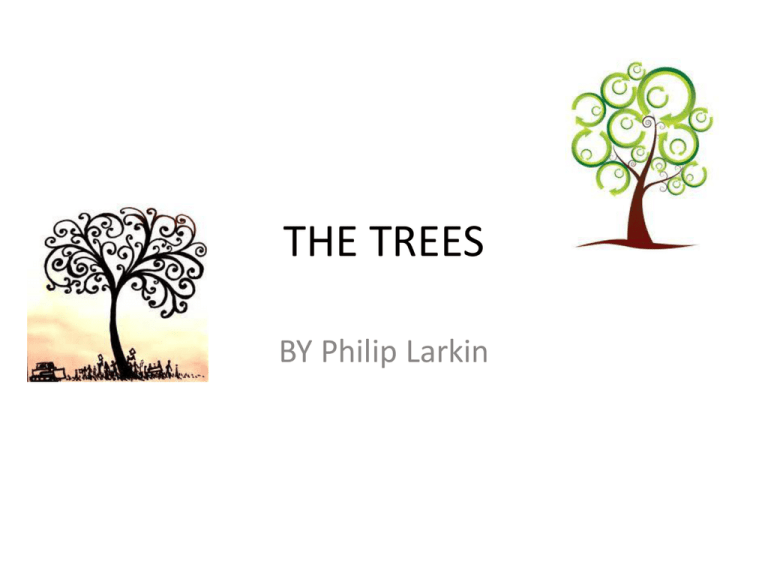
THE TREES BY Philip Larkin The Trees The trees are coming into leaf Like something almost being said; The recent buds relax and spread, Their greenness is a kind of grief. Is it that they are born again And we grow old? No, they die too. Their yearly trick of looking new Is written down in rings of grain. Yet still the unresting castles thresh In fullgrown thickness every May. Last year is dead, they seem to say, Begin afresh, afresh, afresh. -Philip Larkin General Ideas *a twelve-line poem *compare the life and cycles of a tree to human experience *use of personification of leaves, buds, and bark as spoken words, grief, and many other abstract items *relating the anatomy and activity of a tree to the emotions and philosophy of a human closing and opening various chapters in his or her life. Technical Matters *the twelve lines of the poem are arranged into four-line stanzas. *In each stanza, the first and fourth line rhyme with one another in a true rhyme pattern *the second and third lines work in an additional true rhyme *In complete, this rhyme scheme appears in the following pattern: A B B A - C D D C - E F F E Lines worth a mention Line 7, 8 *Literal meaning: the growth pattern of a tree, the growing part of the tree is at the outer edges, under the bark. The cross-section of the trunk reveals the pattern of alternating thick and thin circles( the tree’s growth ring ). Although a tree appears to be reborn and new each spring, its age and processes are shown on the inside. Lines worth a mention Line 9-12 *select words are presented to the reader almost as sound effects (thresh, afresh). These words, when spoken aloud, sounds like the leaves of trees would when being rustled by the wind. As this poem comments on the passage of time and a cycle of death and rebirth, could these winds perhaps be the winds of change? On a more figurative level many perspectives can be taken from these lines *the understanding that although human beings begin new experiences and new chapters in their lives, their old experiences will always be with them. It is an individual's experiences, after all, that make up who they are. Much like a tree, a person will never fully lose the years that have passed them by, and the valuable experience will collect inside them like rings of grain. The 3 D's deceit, disguise, and denial *It’s the idea that although the tree itself does its best to hide the layers of death and destruction resulting from its natural cycle, there are always other means of judging its age. *For instance -the pure size of a tree -presence of or lack of vegetation surrounding its base. *Similarly, many human beings choose to partake in agedefying treatments such as botox, cosmetic surgery, or chemical creams. The Poet Philip Larkin 1922–1985 • Philip Larkin, an eminent writer in postwar Great Britain, was commonly referred to as "England's other Poet Laureate" until his death in 1985. Indeed, when the position of laureate became vacant in 1984, many poets and critics favored Larkin's appointment, but the shy, provincial author preferred to avoid the limelight. An "artist of the first rank" in the words of Southern Review contributor John Press, Larkin achieved acclaim on the strength of an extremely small body of work—just over one hundred pages of poetry in four slender volumes that appeared at almost decade-long intervals. These collections, especially The Less Deceived, The Whitsun Weddings, and High Windows, present "a poetry from which even people who distrust poetry, most people, can take comfort and delight," according to X. J. Kennedy in the New Criterion. Larkin employed the traditional tools of poetry—rhyme, stanza, and meter—to explore the often uncomfortable or terrifying experiences thrust upon common people in the modern age. As Alan Brownjohn notes in Philip Larkin, the poet produced without fanfare "the most technically brilliant and resonantly beautiful, profoundly disturbing yet appealing and approachable, body of verse of any English poet in the last twenty-five years." Additional Helps For a line to line analysis go to : http://mindfulpleasures.blogspot.com/2010/05/ trees-by-philip-larkin.html
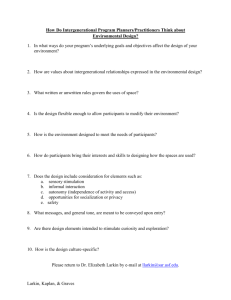
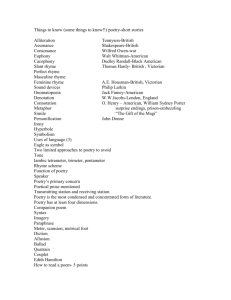
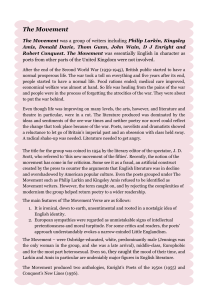
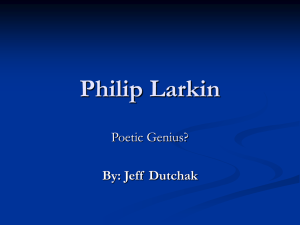


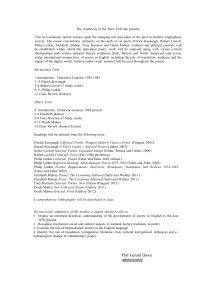
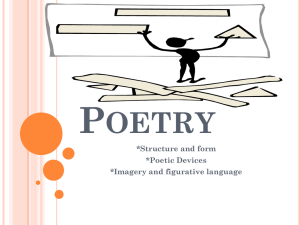
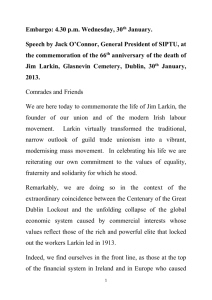
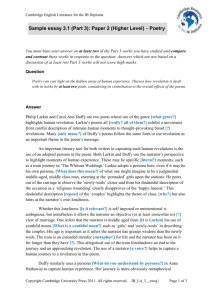

![A03[1] - Mrsjgibbs](http://s2.studylib.net/store/data/005811994_1-4407528d436864b3ce53aa6e26b32fb5-300x300.png)